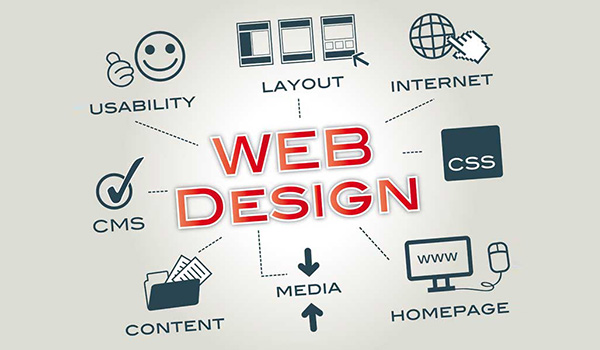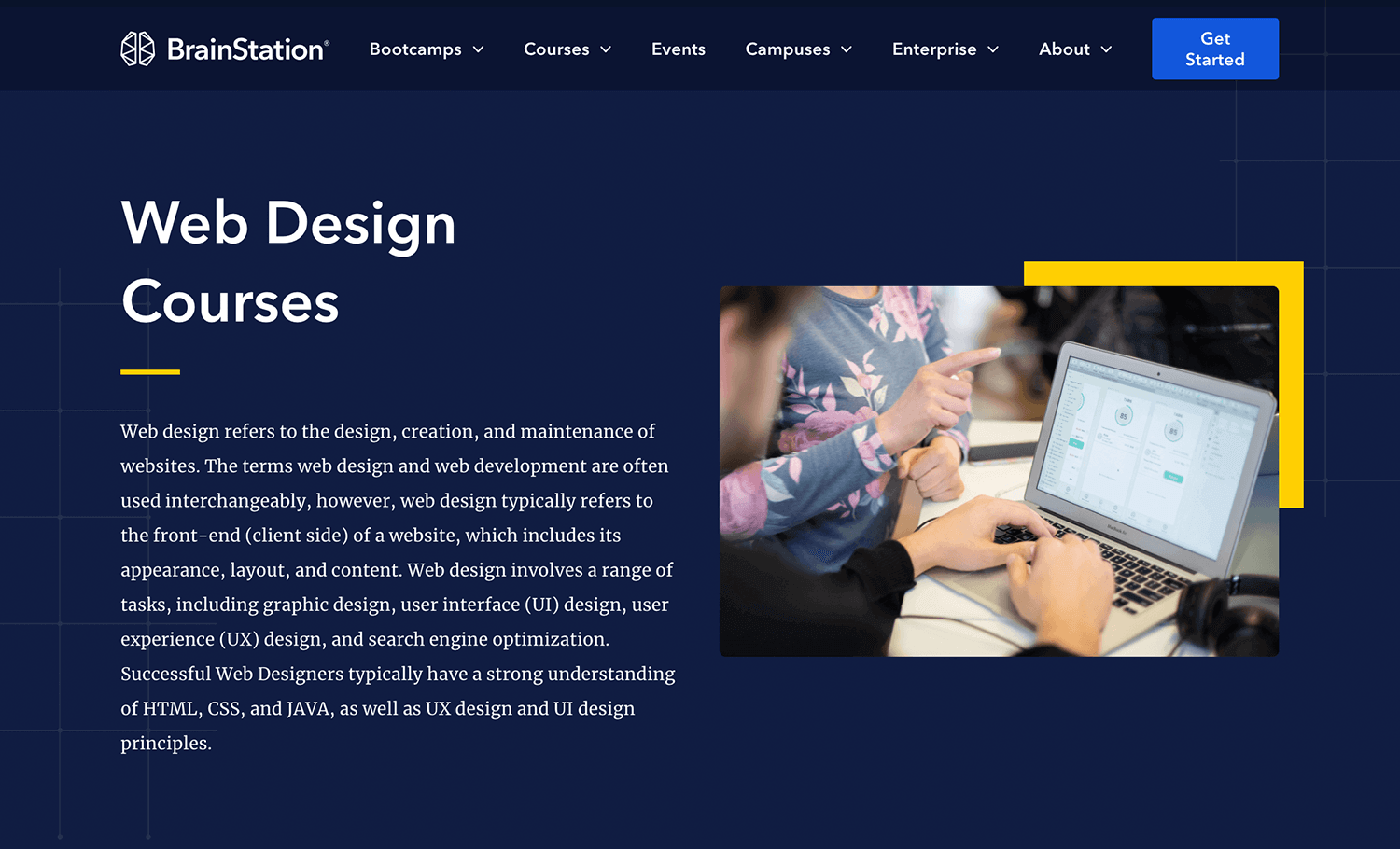Innovative Aligned Position Web Design: Future-Proof Websites for Businesses in Every Niche
Innovative Aligned Position Web Design: Future-Proof Websites for Businesses in Every Niche
Blog Article
The Best Kinds of Website Design to Enhance Individual Experience and Involvement
In the ever-evolving landscape of electronic interaction, the effectiveness of Web design substantially impacts customer experience and involvement. Numerous style methods, such as minimalist, responsive, and interactive formats, each deal unique benefits that can provide to varied user demands. Recognizing which sorts of website design best offer these goals can be crucial for organizations aiming to improve consumer satisfaction and retention. The question continues to be: which style components absolutely reverberate with customers and foster significant engagement? The expedition of these concepts discloses vital insights that may redefine your approach to website design.
Minimal Website Design
As digital landscapes end up being increasingly messy, minimalist Web design has become a powerful method to improving user experience. This design philosophy focuses on simpleness, concentrating on necessary aspects while getting rid of unnecessary diversions. By making use of ample white area, simple navigation, and a restricted color palette, minimal layout promotes clarity and routes customer interest to key web content.
The core concept of minimalist Web style is to produce a smooth communication for users. By reducing cognitive tons, users can swiftly comprehend info without really feeling bewildered. This direct method not only enhances usability yet likewise encourages engagement, as visitors are much more most likely to check out a site that is visually appealing and very easy to navigate.
Furthermore, minimal design typically stresses typography and images, utilizing these aspects purposefully to convey messages efficiently. In essence, minimal Web layout is not just a pattern; it is a thoughtful method that identifies the importance of user-centered design.
Responsive Website Design
In today's varied electronic setting, receptive Web design has actually come to be vital for developing a smooth customer experience throughout a wide range of tools. As customers accessibility websites on smartphones, desktops, laptops, and tablets, the ability of a website to adapt its layout and web content to various display dimensions and resolutions is critical.
Receptive website design utilizes versatile grids, images, and CSS media queries to make certain that Web content is provided efficiently, despite the tool made use of. This strategy not just enhances the aesthetic allure of a web site however also considerably improves use. Customers are a lot more likely to engage with a website that provides a regular experience, as it eliminates the stress of needing to zoom in or scroll exceedingly.
Additionally, online search engine, including Google, focus on mobile-friendly internet sites in search positions. By adopting receptive design, businesses can boost their presence and get to a broader audience. This approach likewise streamlines site upkeep, as a single variation of the site can provide to all devices, lowering the need for numerous variations. In summary, receptive Web style is a fundamental method that enhances user experience, interaction, and overall contentment.
Interactive Website Design
Responsive Web design lays the foundation for enhancing user experience, however interactive website design takes this a step further by engaging customers in a more dynamic method - Aligned Position Web Design. By including components such as animations, clickable prototypes, and real-time responses, interactive Web layout mesmerizes individuals, attracting them into a richer browsing experience
This approach not only promotes engagement however additionally motivates customers to discover material proactively instead of passively consuming it. Techniques such Learn More Here as gamification, where users make benefits for completing tasks, can dramatically boost the moment invested in a website and boost general fulfillment. In addition, interactive attributes can streamline intricate details, making it much more satisfying and absorbable.

Integrating interactive layout elements can likewise bring about greater conversion prices, as customers are much more most likely to involve with a site that actively includes them. Aligned Position Web Design. Inevitably, interactive Web style changes customer experiences into unforgettable journeys, making certain that visitors return time after time
Apartment Layout
Identified by its minimalistic strategy, flat design emphasizes simplicity and functionality, removing unneeded aspects and focusing on vital functions. This design approach focuses on use, ensuring that users can navigate user interfaces effortlessly and performance. By using a tidy visual, level style gets rid of the clutter usually found in more luxuriant designs, consequently improving individual focus on material and performance.
The trademark of flat layout exists in its usage of bold colors, simple typography, and geometric shapes. These components contribute to an aesthetically enticing user interface that is both approachable and modern-day. In addition, flat design fosters a sense of clarity, allowing users to recognize crucial activities and information without distraction.
Furthermore, flat layout is particularly efficient in receptive Web style, as its simpleness translates well across different tools and screen sizes. By concentrating on check over here crucial functions, level layout not only meets individual demands however additionally encourages seamless interaction, making it a crucial part of effective Web layout strategies.
Adaptive Web Style
Flexible Web style customizes the individual experience by producing several dealt with formats customized to various display sizes and devices. Unlike responsive design, which fluidly adjusts a single layout, flexible design employs distinct layouts for certain breakpoints, making certain optimum presentation on different platforms. This technique enables designers to focus on the special features of each gadget, improving usability by delivering specifically what customers require based on their context.
One of the key benefits of flexible Web style is its capability to enhance tons times and performance. By offering tailored web content and photos that fit the customer's gadget, web sites can lessen information use and enhance loading speeds. This is particularly useful for individuals with slower links or restricted data plans.

In addition, adaptive layout assists in a more controlled and regular branding experience. Since designers produce numerous layouts, they can make sure that the visual elements line up with the brand name's identification throughout different platforms - Aligned Position Web Design. This leads to a natural user experience, improving engagement and advertising customer retention
Conclusion
Minimal style fosters clarity and focus, while responsive design ensures adaptability throughout numerous gadgets, promoting accessibility. Jointly, these layout approaches contribute to the creation of straightforward settings that not only boost contentment yet likewise drive higher conversion prices, emphasizing their important significance in modern Web design strategies.

Minimal layout cultivates quality and focus, while receptive layout makes certain flexibility across different devices, promoting accessibility. Collectively, these style comes close to contribute to the creation informative post of straightforward atmospheres that not only boost contentment however also drive greater conversion prices, underscoring their vital value in contemporary Web design methods.
Report this page